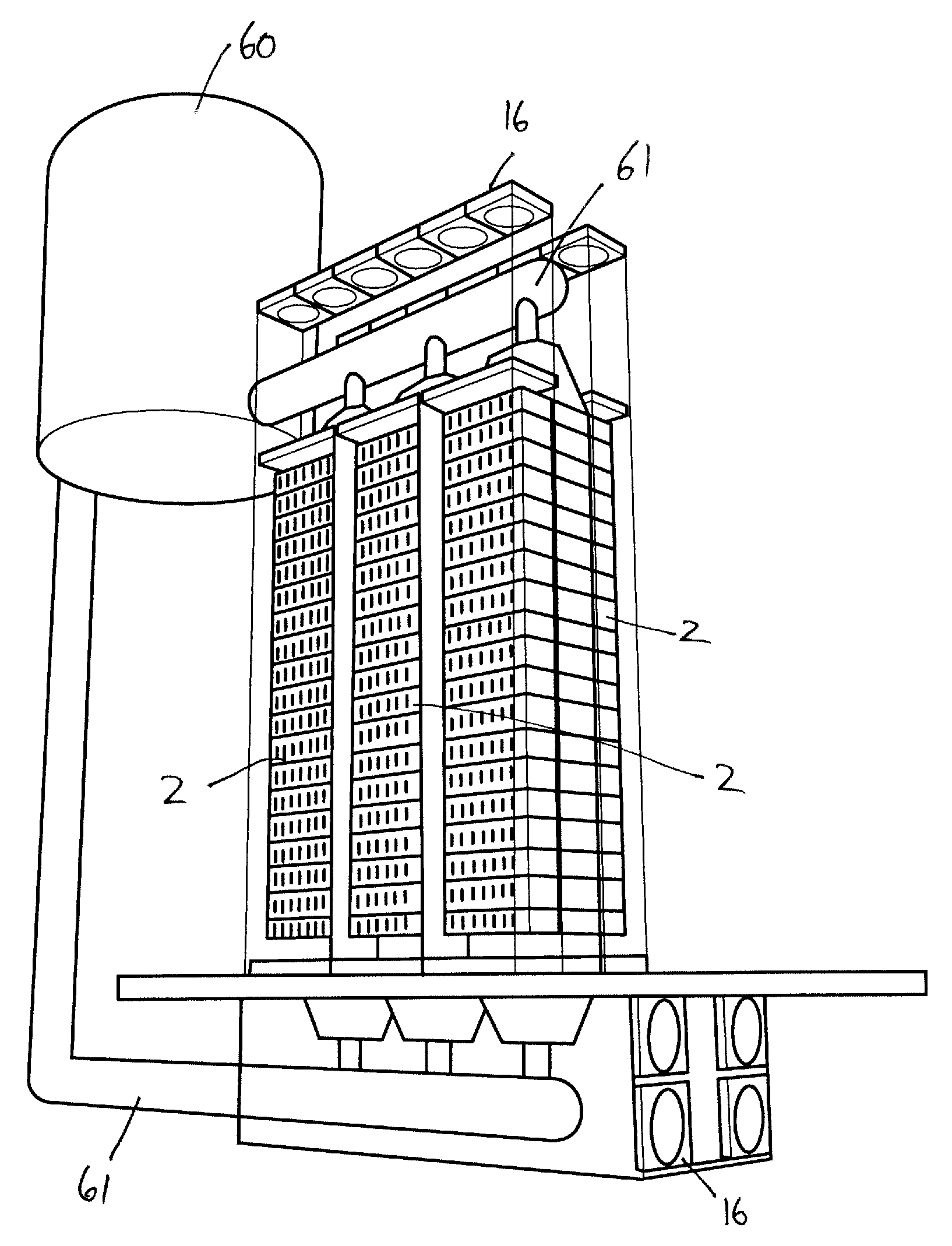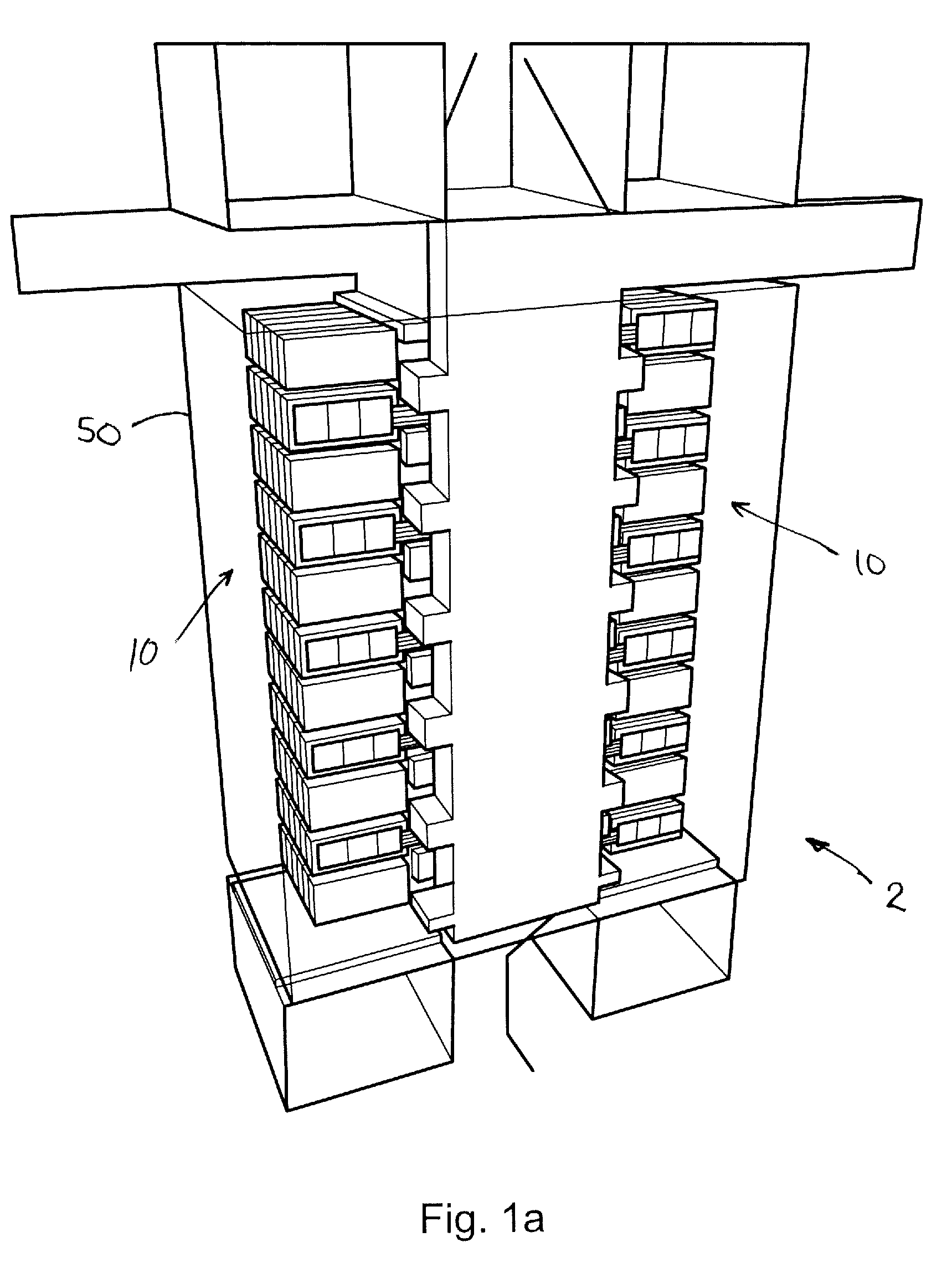Data centers
- Summary
- Abstract
- Description
- Claims
- Application Information
AI Technical Summary
Benefits of technology
Problems solved by technology
Method used
Image
Examples
Embodiment Construction
Data Processor Stack—‘CoreStalk’
[0074]FIG. 1a illustrates a data processor stack 2, referred to as a ‘CoreStalk’ in the following, for use in a data center environment. As explained in more detail below, the stack 2 is built around a novel cooling system that uses a liquid cooling medium (in this example water) as the primary mechanism for transporting heat away from the stack 2. However, to avoid the need for intricate pipe work with a server or other mechanisms to bring the cooling water into close proximity with heat generating components (especially processors) in the stack 2, heat is conducted from these components to the cooling water by heat pipe conductors 4 (see FIG. 1b) that extend laterally from a central column 6 of cooling water (see FIG. 1c) in the stack 2 out to the components.
[0075]In more detail, and with reference to the figures, the CoreStalk concept is aimed at bringing computer processors closer to a better cooling solution, rather than the more difficult and ex...
PUM
 Login to View More
Login to View More Abstract
Description
Claims
Application Information
 Login to View More
Login to View More - R&D
- Intellectual Property
- Life Sciences
- Materials
- Tech Scout
- Unparalleled Data Quality
- Higher Quality Content
- 60% Fewer Hallucinations
Browse by: Latest US Patents, China's latest patents, Technical Efficacy Thesaurus, Application Domain, Technology Topic, Popular Technical Reports.
© 2025 PatSnap. All rights reserved.Legal|Privacy policy|Modern Slavery Act Transparency Statement|Sitemap|About US| Contact US: help@patsnap.com



